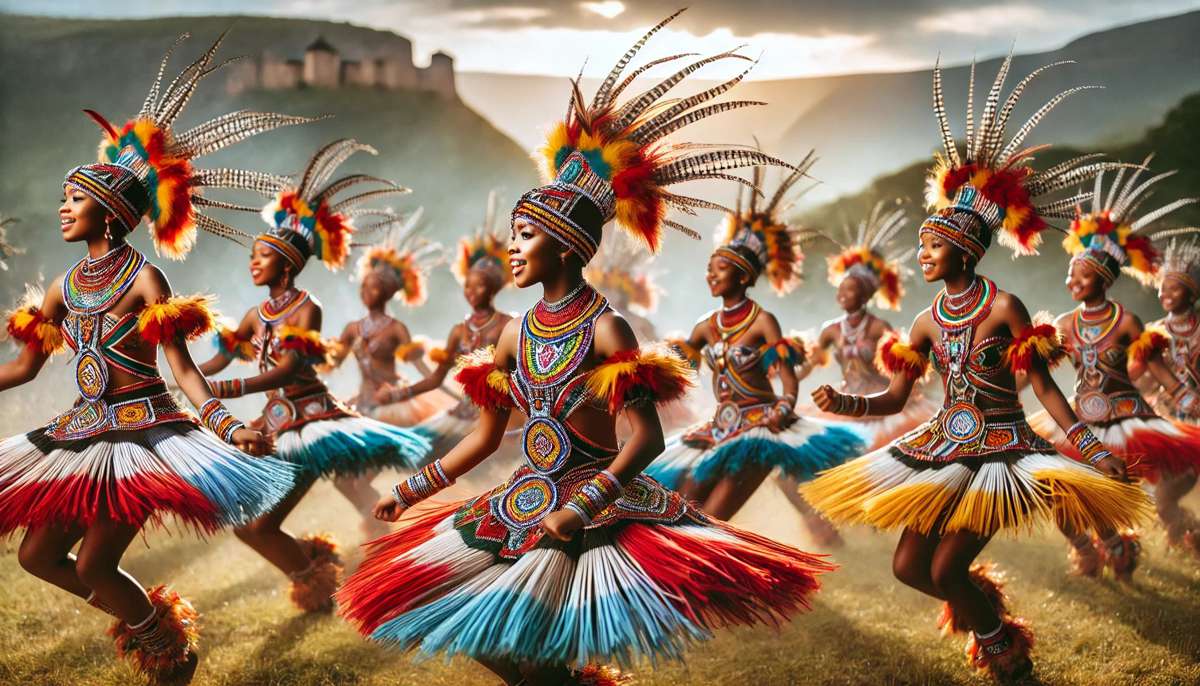The Umhlanga Reed Dance and the Vibrant Pulse of Eswatini
Every year, as August transitions into September, the small yet culturally rich nation of Eswatini bursts into life with one of Africa’s most captivating celebrations—the Umhlanga Reed Dance.
From 27 August to 2 September in 2024, the kingdom will once again play host to this vibrant eight-day event, where thousands of Swazi maidens gather to honour the Queen Mother through an enchanting display of dance, song, and tradition. For travellers seeking an authentic cultural experience, this festival is an immersion into the heart of Eswatini’s heritage, making it a must-see spectacle on the continent.
As one of Africa’s most iconic cultural events, the Umhlanga Reed Dance draws up to 40,000 young girls, each adorned in brilliantly coloured attire, to the Ludzidzini Royal Residence. Against the backdrop of the lush Ezulwini Valley, these maidens perform time-honoured rituals, culminating in a grand celebration that sees them dance before the King on the festival’s “Main Day” on 2 September.
The scale and vibrancy of the event are unparalleled, offering visitors a unique window into Eswatini’s deeply rooted traditions and communal pride.
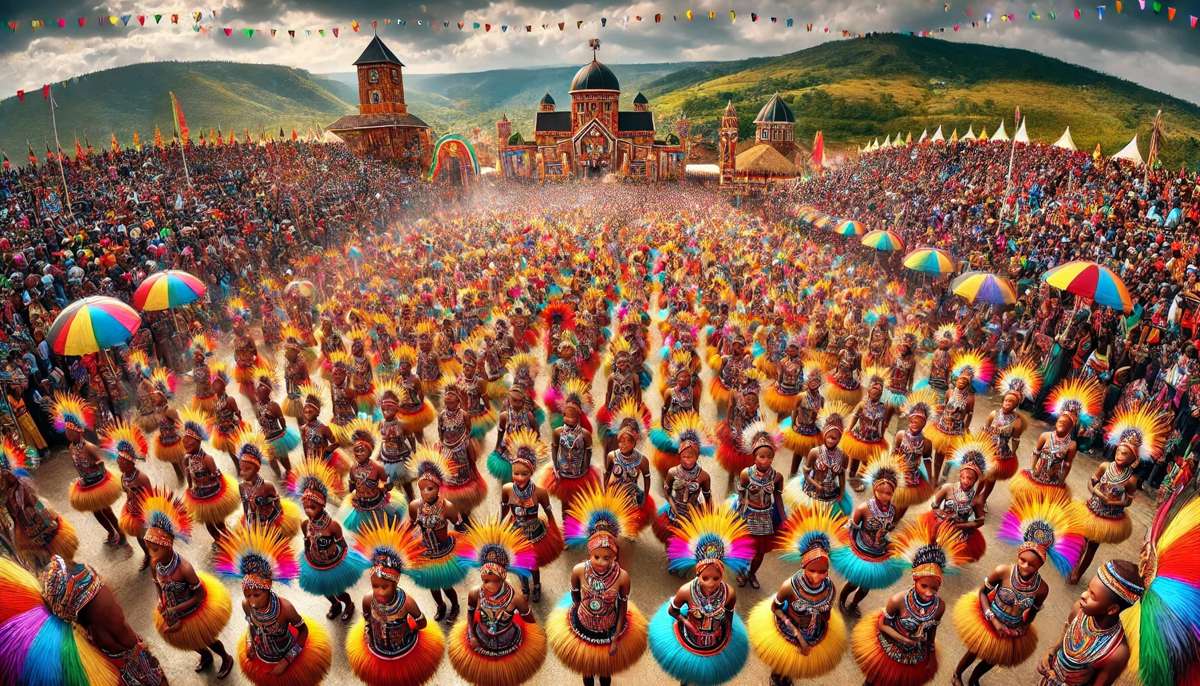
A Cultural Extravaganza
The Umhlanga Reed Dance is steeped in tradition, where thousands of Swazi girls unite to honour the Queen Mother, the Indlovukazi, by gathering reeds and performing traditional dances. With its origins dating back centuries, this event has grown into one of Africa’s largest and most visually striking cultural showcases. Over the course of eight days, the festival seamlessly blends age-old customs with the joyful spirit of celebration, offering visitors an extraordinary experience that’s as enriching as it is captivating.
The ceremony is definitely a feast for the senses. Clad in colourful traditional attire decorated with beads, feathers, and bright fabrics, the maidens march to the reed-beds to cut and collect reeds, which they later present to the Queen Mother. This symbolic act of bringing reeds to repair the royal windbreak has grown into a cultural expression of respect and unity. The climax of the event arrives on the “Main Day,” when the maidens perform before the King in a dazzling display of synchronised dance and song. For anyone seeking to experience Eswatini’s cultural heartbeat, this is the day not to be missed.
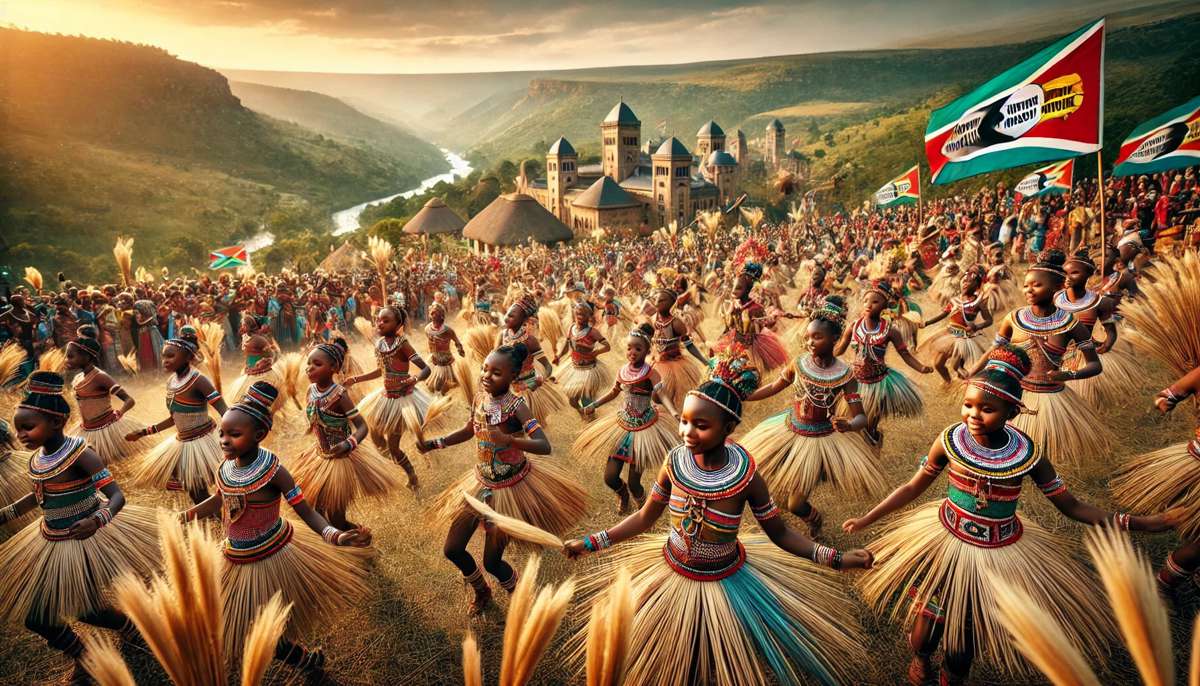
What to Expect During the Ceremony
While the entire eight-day event is a captivating journey into Eswatini’s traditions, certain days offer particularly spectacular moments. The excitement truly begins on Day Six when the dance festivities officially kick off. After days of gathering reeds and preparing their outfits, the maidens, full of anticipation, make their way to the Queen Mother’s quarters to deposit the reeds they’ve collected. The scene is a riot of colour and sound, with thousands of girls marching in unison to the rhythm of traditional drums, filling the air with songs and stamping feet.
Day Seven, often called the “Main Day,” is the pinnacle of the festival. His Majesty the King graces the event with his presence, making this the most significant day for both locals and visitors. Each regiment takes its turn to perform in front of the King in the grand arena, showcasing a breathtaking display of cultural pride, tradition, and unity. The sheer magnitude of the event, with thousands of girls dancing in synchrony, creates a wave of colour and rhythm that ripples across the Ludzidzini Royal Residence. For those attending, it’s a sensory spectacle where sight, sound, and spirit combine into an unforgettable experience.
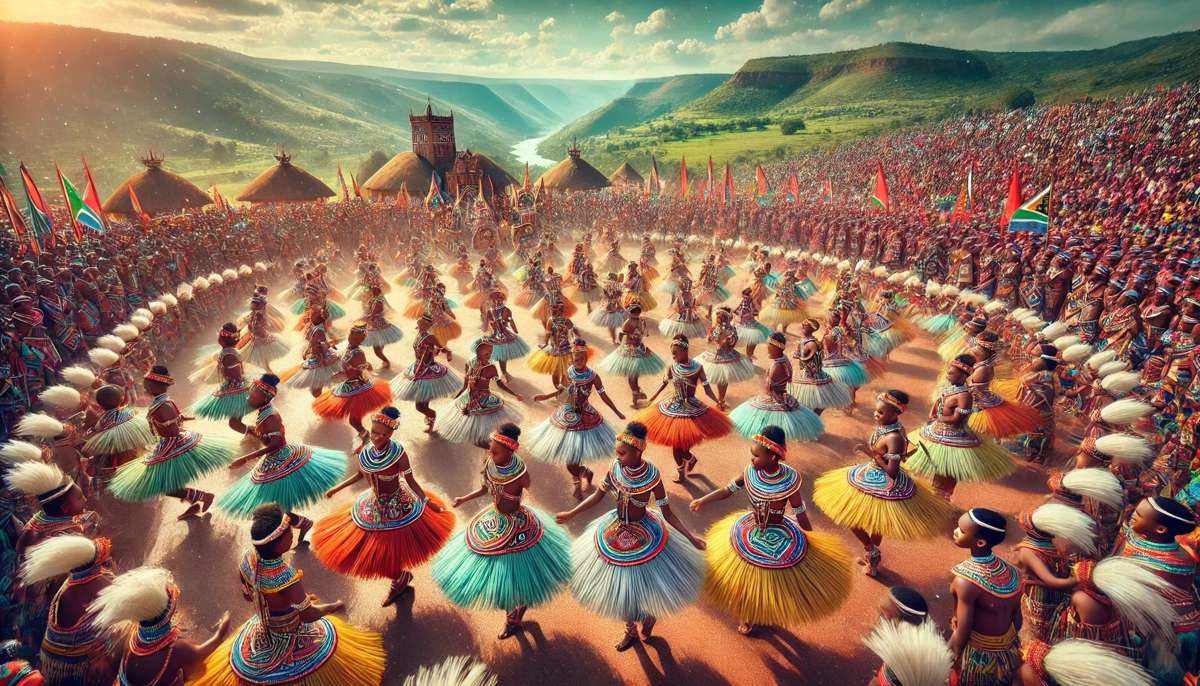
An Authentic Cultural Experience
If you’re planning to attend the Umhlanga Reed Dance, it’s worth understanding the logistics to fully enjoy this remarkable event. The festival is held annually at the Ludzidzini Royal Residence, near the scenic Ezulwini Valley. While the festival runs from the end of August into early September, the main days to mark in your calendar are Days Six and Seven, with the “Main Day” on 2 September being the best opportunity to witness the festivities in all their glory. Getting there is straightforward, with well-marked routes and helpful locals to guide you. The Eswatini Tourism Authority also provides a Tourist Information Centre within the Ludzidzini grounds to assist visitors, ensuring you won’t miss out on any important aspects of the celebration.
Accommodation near the Ezulwini Valley ranges from budget lodges to upscale resorts, but with the popularity of the event, it’s advisable to book well in advance. Visitors are welcome in the main arena and designated tourist areas, though exploring the Royal Residence requires the accompaniment of a local guide. For photography enthusiasts, Days Six and Seven are the best times to capture the vibrant imagery of the event, from the maidens marching with reeds to the mesmerising dance performances. Outside these days, photography is restricted to accredited media personnel, preserving the sanctity of the more private moments of the ceremony.
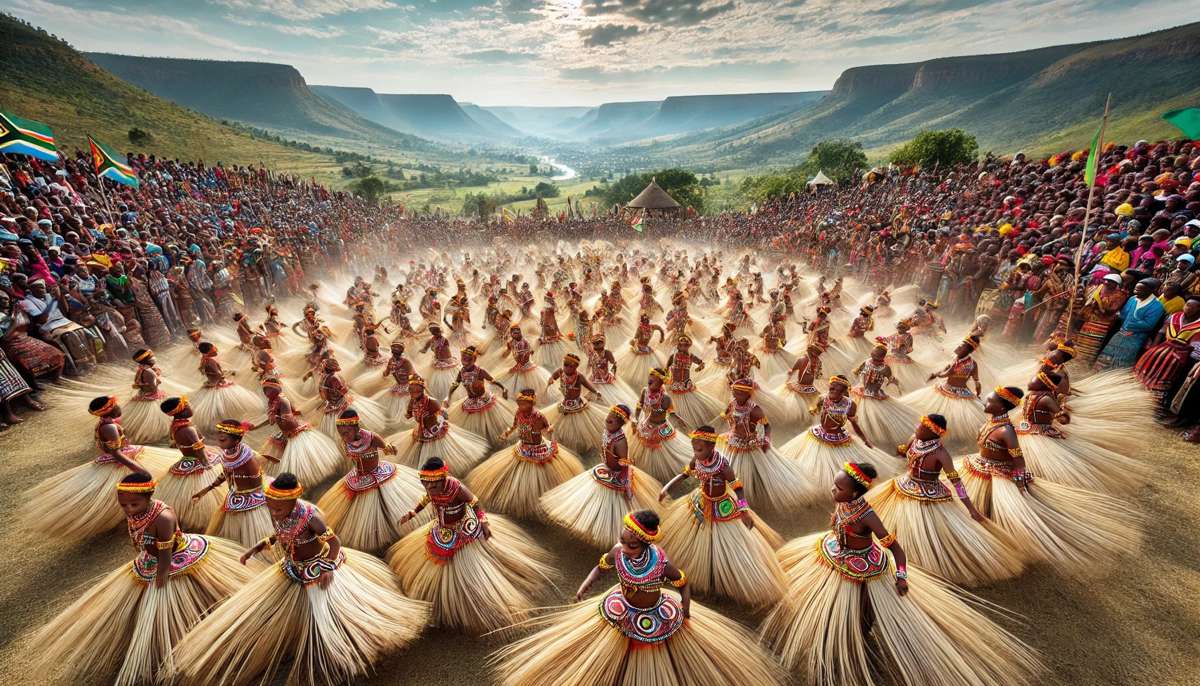
The Rituals of the Reed Dance
The Umhlanga Reed Dance follows a carefully structured schedule, each day contributing to the ceremonial build-up that leads to the grand finale on the Main Day. It begins with the registration of maidens at the Queen Mother’s village on Day One, where groups from various chiefdoms gather under the watchful eyes of supervisors. Over the next few days, the girls are divided into age groups and set off on long marches to the reed-beds, with older girls often covering distances of up to 30 kilometres. The sight of these maidens, many in traditional attire, journeying through the countryside is a powerful testament to the endurance and commitment involved in preserving their cultural heritage.
By Day Three, the maidens begin the demanding task of cutting reeds, bundling them together using either modern plastic ties or traditional grass ropes. The return journey to the Queen Mother’s village, often taking place under the cover of night, symbolises the effort and distance travelled. Day Five is a much-needed rest day, during which the girls prepare their hair and costumes for the upcoming dance performances. As the anticipation builds, Day Six sees the maidens dropping off their reeds at the Queen Mother’s quarters before gathering in the main arena for their first round of dancing.
The Main Day on Day Seven is a spectacle that draws both locals and international visitors alike. With the King present, the maidens perform in a dazzling showcase of synchronised movement, vibrant colours, and infectious energy. The festival concludes on Day Eight with a celebratory feast, during which several cattle are slaughtered as a reward for the maidens’ participation, bringing the ceremony to a close as they return to their homes.
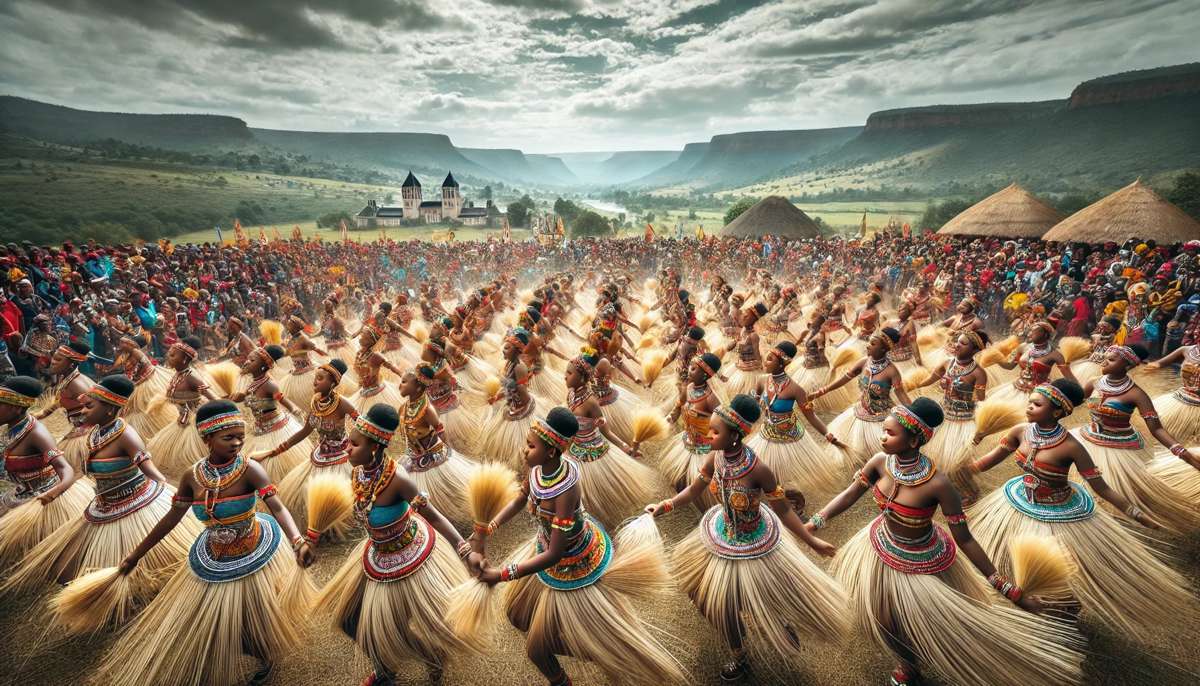
The Timeless Appeal of Tradition
In a rapidly changing world, the Umhlanga Reed Dance stands as a beacon of resilience and cultural pride. While similar traditions elsewhere face decline, this event has only grown in popularity, becoming a cornerstone of Eswatini’s national identity. Cultural historians are often struck by how the kingdom has maintained and even amplified this tradition, making it a vibrant expression of both communal values and individual pride. For visitors, the festival offers more than just a spectacle—it’s an opportunity to engage with a living, breathing culture that remains steadfast in its traditions.
In an age where many cultural experiences have become commodified, the Umhlanga Reed Dance offers something truly unique. It’s a raw and unfiltered celebration of heritage, where the past and present converge in a display that is as visually stunning as it is soul-stirring. For those seeking an adventure that blends authenticity with awe, this festival offers a journey into the heart of Eswatini’s cultural landscape, leaving an indelible mark long after the rhythms have faded.
For those eager to dive into a celebration unlike any other, the Umhlanga Reed Dance in Eswatini promises a unique and culturally enriching adventure that lingers in the memory long after the rhythms have faded.
